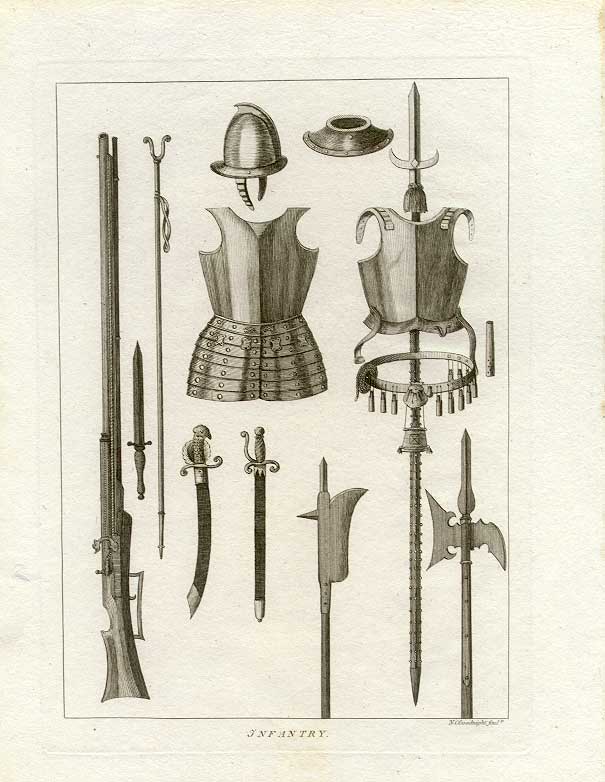Act 1 Scene 1 costume research - Bernardo by ada
BERNARDO:
In some editions, Bernardo is an officer, in some he is listed as a soldier. If he is a common soldier, then he could have the same costume as Francisco. In the text both he and Marcellus defer to Horatio’s education, although Marcellus seems to be of equal rank to Horatio when they’re talking to Hamlet in a later scene. Bernardo seems to have a higher rank than Francisco, but lower than Marcellus.
Here is an approach to a middle class, lower ranking officer’s clothing. Middle class and noble costumes were similar in construction, but the middle class costumes had less expensive trim that could be sewn at home – edged slashing, bands, small amounts of embroidery. There would have been very little lace, no beads, metallic thread, or jewels.
Shirt: Similar to the peasant shirt described for Francisco, but likely to be cut narrower through the body, for comfort under the fitted doublet. It was almost always unbleached linen, with small box-pleated ruffles at neck and wrist. The ruffles might have narrow lace or blackwork embroidery, or an edging of small blanket-stitching, in black.
Nether Hose: There were two basic types of nether hose, or pants. The first illustration shows Venetian breeches - knee length pants gathered at the waist and tapered to the knee, where they buttoned or tied. The other type is known as slops or paned breeches. These are fully puffed, usually mid thigh in length, although they can be as short as crotch length or as long as below the knee. They have an inner, fitted layer, then a layer of padding, then a gathered layer of fabric, and finally a series of panes, strips of fabric stiffened, lined, and usually decorated, to form the top layer. They sometimes have a padded and decorated codpiece, a separate flap like item that covers the fly front – codpieces are going out of fashion at this time, but military uniforms in any age are slower to change with fashion.
Doublet: Vest-like garment. It can (but doesn’t have to be) of the same fabric as the nether hose. It usually has a high neckline with a standing collar, and is closely fitted. It always fastens down the front. It has tabs at the shoulders and usually a peplum below the waist. It usually has eyelet holes at the waistline or in a strip mounted under the peplum skirting, to which points (strips with metal tips) sewn to the nether hose can be tied, or trussed, to keep them up. A doublet often has a similar strip under the shoulder tabs to attach sleeves.
Sleeves were optional separate garments, and did not necessarily match the other garments. The image above shows slashed sleeves that do match the doublet. The soldier below does not have attached sleeves.
Cloaks, though almost always worn by nobles, were optional for middle class men. I didn’t find any images of middle class soldiers wearing them.
Nether stocks, or tights, were made of knitted wool or silk, or of bias cut fabric. They were shaped like a pair of tights cut in half at the crotch seam. They were held up with a drawstring around the waist, and tied to the doublet with points, along with the breeches. Sometimes they were gartered at the knees with a long strip of cloth, or knitting wrapped over the top of the knee, crossed behind, and tied in front below the knee, to keep them from bagging and call attention to a handsome leg – see image above.
Boots: If Bernardo is wearing Venetian breeches then he should be wearing shoes like bedroom slippers or men’s formal pumps, either with a wide t-strap, or laced, as in the illustration. If he’s wearing slops (wide breeches), then he can have boots – moderate heels, rounded toes, up to the length of the breeches (shorter breeches = higher boots), with a flared cuff that could be turned down.
Hat: The soldier with no armor is probably a ceremonial guard. The soldier with the helmet is ready for battle. In the Hamlet text the sentries are awaiting the arrival of Fortinbras’ army, so they may have been wearing helmets, as in the illustration below, over a linen coif. Director’s decision as to which way to go.
Belt: See illustrations for Francisco, except that Francisco’s is plain, and Bernardo might have a fancier one, without the eating knife, with a purse and possibly a strap for a sword (see soldier below), though he might have only had the partisan – same as Francisco.
Gloves: Neither of these images shows the soldiers wearing gloves, and my reading doesn’t indicate anything about middle class men wearing them. The text of the play indicates cold, but they were actually performing it in the summer. I think that’s the designer’s call - if it looks better with gloves, then yes, otherwise, no.



